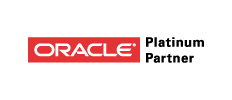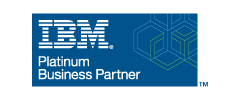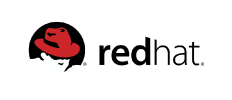Hybrid Cloud Technology
The technology is progressing both in the field of software and in the field of hardware. Data centers that for years represent the basic form of IT infrastructure are something that everyone is accustomed to and will not disappear tomorrow. Not only because of the necessary caution of those who decide, nor because of the concern about the future of the profession of engineers, but from the technical inability to make a drastic cut for such a significant issue. Hybrid Cloud is the next inevitable station for everyone - both those who are suspicious and those who are looking forward to the new. It is an optimal solution to the challenge of staying in the game, taking advantage of the speed of change and innovation of the Cloud ecosystem, while preserving the control and freedom of choice in your own IT system.
Hybrid Cloud Technology
The technology is progressing both in the field of software and in the field of hardware. Data centers that for years represent the basic form of IT infrastructure are something that everyone is accustomed to and will not disappear tomorrow. Not only because of the necessary caution of those who decide, nor because of the concern about the future of the profession of engineers, but from the technical inability to make a drastic cut for such a significant issue. Hybrid Cloud is the next inevitable station for everyone - both those who are suspicious and those who are looking forward to the new. It is an optimal solution to the challenge of staying in the game, taking advantage of the speed of change and innovation of the Cloud ecosystem, while preserving the control and freedom of choice in your own IT system.
HYBRID CLOUD PRODUCTS
Containerization
Containers have reached the level of maturity required for production. The orchestration platforms guarantee the availability and performance of production services by managing the number of active containers (floors) at any time. The ease and speed of raising docker containers, their immutability and isolation of software dependencies make it ideal for transparent migration and scaling services between private and public infrastructure.
Container orchestration platforms represent a natural environment for the development of cloud native applications, short cycles of the development of new functionality (CI / CD), automated process of the creation of an environment (infrastructure as code), automated software testing and controlled release of new versions into production, ie all aspects of the devOps paradigm . Kubernetes is the basis of several commercial solutions of this type, such as IBM Cloud Private and Red Hat Openshift.
Enterprise Service Bus (ESB)
Moving from monolithic information systems to microservice architecture is a complex and time-consuming process. Service-oriented architecture and Enterprise Service Bus technology are an inevitable step towards this goal. The first innovations with microservices, on new container platforms, can begin immediately, when you put the legacy systems in the form of a REST API interface. ESB can be a link between old and modern technologies, opening the possibility of gradual and controlled migration, or it can be a point that connects your on-premise applications to services on a public cloud infrastructure, or with public SaaS and PaaS services.
API Management
In the architecture of easily bound components that communicate exclusively via the API endpoints, it's important to have absolute control over all interfaces - from up-to-date API documentation, API version records, usage monitoring ("consumption"), and integration with billing systems, to the right of access and control of what is exposed and under what conditions.
Identity & Access Management
Hybrid cloud implies the existence of user accounts in two domains - private (on-premise) and public (public cloud). A public domain is potentially a set of multiple security domains that belong to different cloud providers.
In order for the company's security policy to be consistently implemented in a complex hybrid environment, it is necessary to establish a clear link between repositories of user accounts in different domains and control all processes of opening, changing attributes and rights, and finally closing accounts. In addition to traditional IAM solutions, there are new products available that are specialized for cloud environments, such as Cloud Access Security Broker - CASB.
Cloud at Customer
The primary obstacle in the acceptance of a public cloud solution is the legal framework, that is, the prohibition of keeping data about the persons of one county in the data centers of another country. Oracle offers the original Cloud-at-Customer option, offering its public cloud services, including leading PaaS database products, in the form of on-premises systems. The offer is especially interesting for existing users of Exadata Database Machine's, because integration with Cloud-at-Customer systems can create disaster recovery, development and test environments that are safe, performance-based, in accordance with the law, and carry all the benefits of PaaS services - subscription model and complete technical support.
Containerization
Containers have reached the level of maturity required for production. The orchestration platforms guarantee the availability and performance of production services by managing the number of active containers (floors) at any time. The ease and speed of raising docker containers, their immutability and isolation of software dependencies make it ideal for transparent migration and scaling services between private and public infrastructure.
Container orchestration platforms represent a natural environment for the development of cloud native applications, short cycles of the development of new functionality (CI / CD), automated process of the creation of an environment (infrastructure as code), automated software testing and controlled release of new versions into production, ie all aspects of the devOps paradigm . Kubernetes is the basis of several commercial solutions of this type, such as IBM Cloud Private and Red Hat Openshift.
Enterprise Service Bus (ESB)
Moving from monolithic information systems to microservice architecture is a complex and time-consuming process. Service-oriented architecture and Enterprise Service Bus technology are an inevitable step towards this goal. The first innovations with microservices, on new container platforms, can begin immediately, when you put the legacy systems in the form of a REST API interface. ESB can be a link between old and modern technologies, opening the possibility of gradual and controlled migration, or it can be a point that connects your on-premise applications to services on a public cloud infrastructure, or with public SaaS and PaaS services.
API Management
In the architecture of easily bound components that communicate exclusively via the API endpoints, it's important to have absolute control over all interfaces - from up-to-date API documentation, API version records, usage monitoring ("consumption"), and integration with billing systems, to the right of access and control of what is exposed and under what conditions.
Identity & Access Management
Hybrid cloud implies the existence of user accounts in two domains - private (on-premise) and public (public cloud). A public domain is potentially a set of multiple security domains that belong to different cloud providers.
In order for the company's security policy to be consistently implemented in a complex hybrid environment, it is necessary to establish a clear link between repositories of user accounts in different domains and control all processes of opening, changing attributes and rights, and finally closing accounts. In addition to traditional IAM solutions, there are new products available that are specialized for cloud environments, such as Cloud Access Security Broker - CASB.
Cloud at Customer
The primary obstacle in the acceptance of a public cloud solution is the legal framework, that is, the prohibition of keeping data about the persons of one county in the data centers of another country. Oracle offers the original Cloud-at-Customer option, offering its public cloud services, including leading PaaS database products, in the form of on-premises systems. The offer is especially interesting for existing users of Exadata Database Machine's, because integration with Cloud-at-Customer systems can create disaster recovery, development and test environments that are safe, performance-based, in accordance with the law, and carry all the benefits of PaaS services - subscription model and complete technical support.
INDUSTRIES

Application of Hybrid Cloud technology is possible in all industries, i.e. companies that offer products and services. They are provided with a private cloud to store or retrieve data used exclusively by employees while using public cloud in interaction with clients.
REFERENCE





VENDORS









